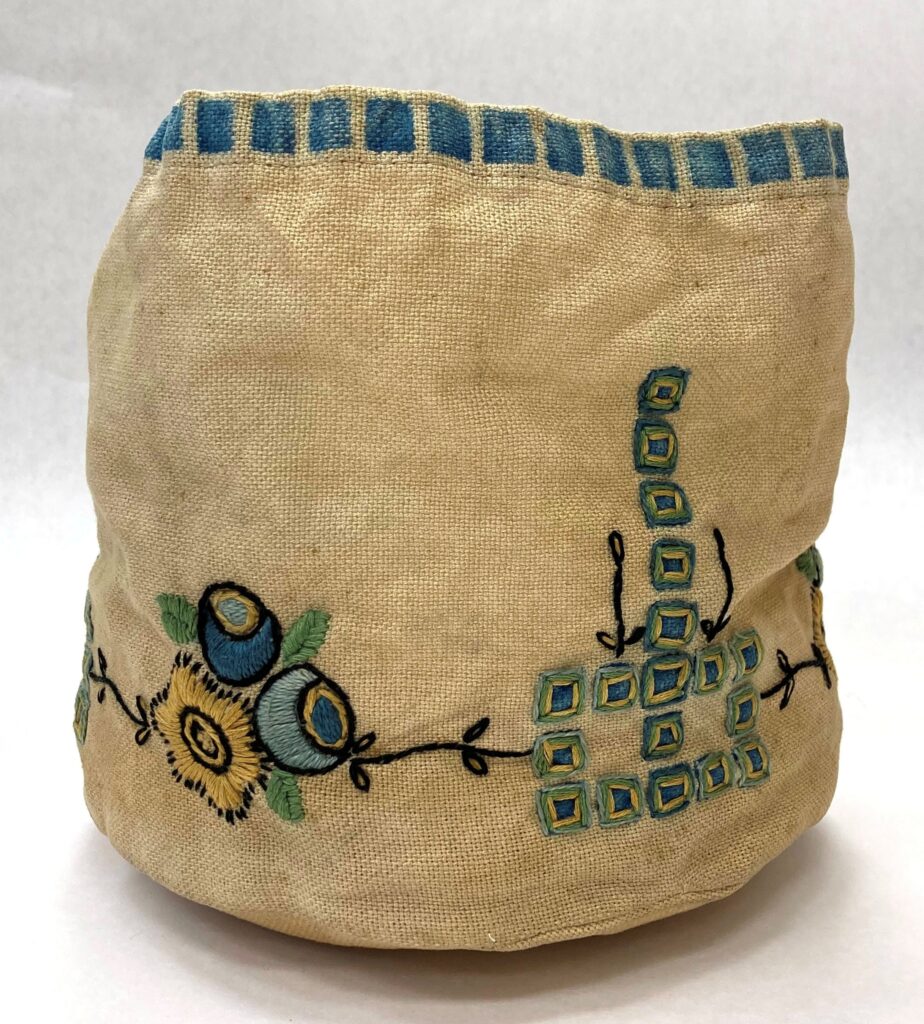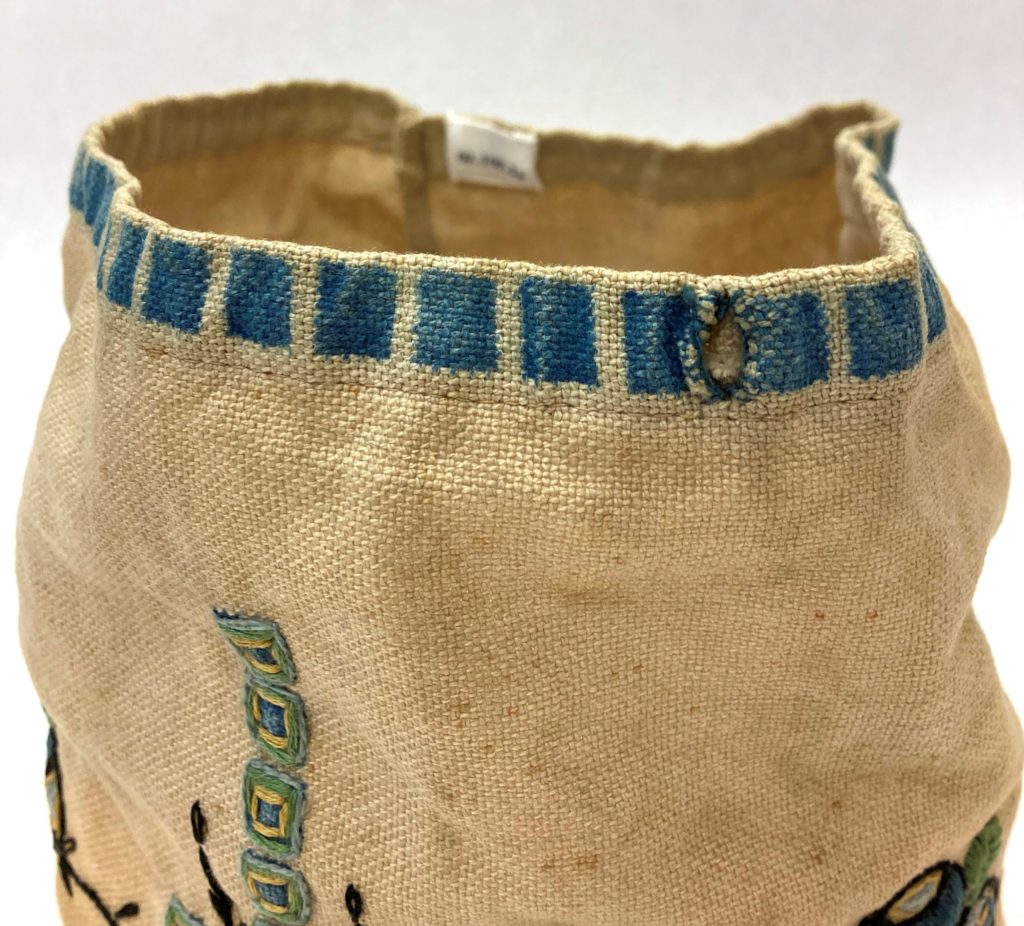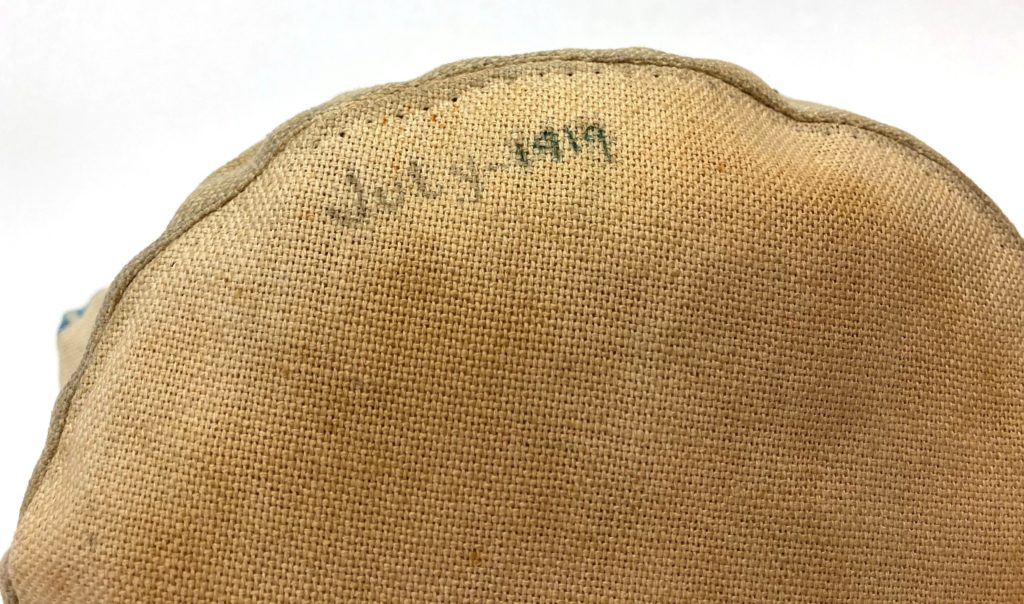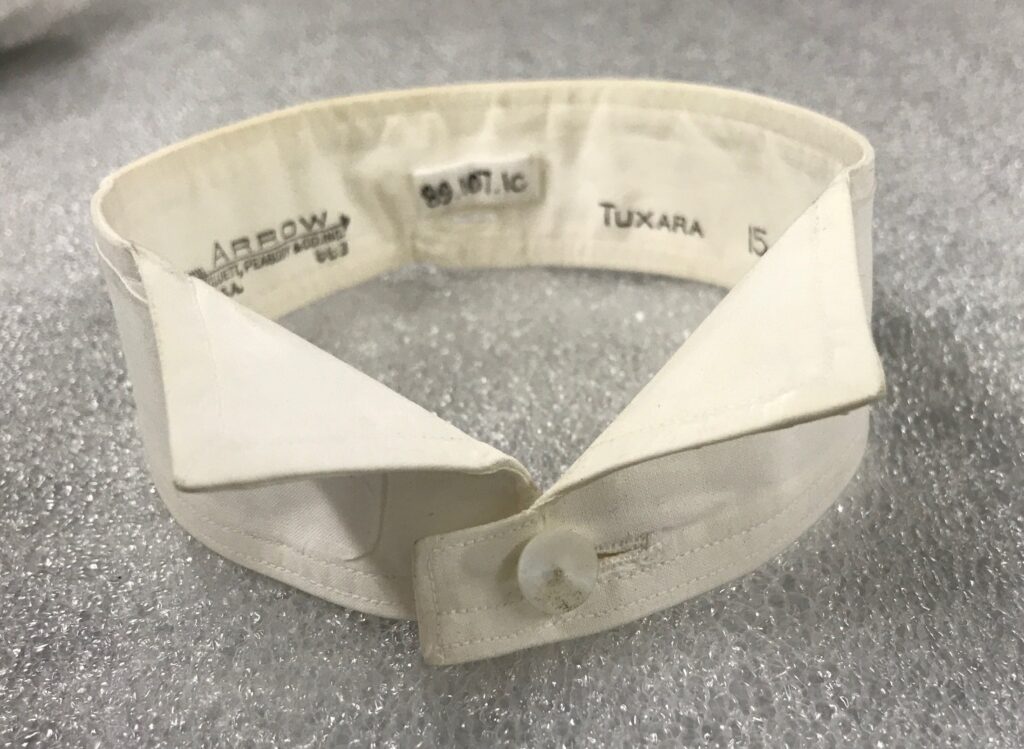Embroidered collar bag, July 1919
Here we have a cheerful little embroidered bag, made by Ada Levi Falk (1892-1973) to hold her husband’s collars.

This unlined bag, with a round bottom and a drawstring top, features both floral and geometric needlework designs in a pleasingly symmetrical arrangement. The ink pattern around the top, where the (now missing) drawstring went, mimics a ribbon insertion, as if the ribbon is woven in and out of many buttonholes – a much more complicated way to create a closure, unlike the bag’s actual, simpler (and less likely to need repairs) two-opening method. Basically, it’s a practical way to make it look fancy: a win-win.

Though Ada didn’t sign her work, someone did write the date in ink on the bottom: “July 1919”. To me, that implies that while Harry would of course remember that his wife had done the work, making a signature superfluous, the date it was made was an important element. (Don’t get me wrong, I would be delighted if every crafter both signed and dated their work – but that is, sadly, not often the case.) It is worth noting that at some point someone re-inked the year; it’s impossible at this point to determine if the original date was in fact 1919, or if someone wrote what they thought it said. “July” is quite clear, though.

What was the occasion that warranted marking the date? Ada married Harry S. Falk (1891-1978) in October of 1915; Harry’s birthday was either in February or December; and he did not serve in the military during World War One, so he didn’t come marching home to resume his civilian life in July of 1919. In fact he worked for the family’s trouser manufacturing company for most of his life, as early as 1910. Still, the presentation of an attractive new collar bag could mean that there was a promotion or other job change within the company, a momentous occasion that called for something to keep clean and safe that key element of a literal white-collar job: starched, laundered, detachable collars.

One of the two collars that were donated along with the bag. Gift of the children of Ada L. and Harry S. Falk. JMM 1989.107.1c
We do not have any photos of Ada and Harry in the 1910s, sadly. However, doing a little research into their lives has given us a verbal ‘picture’ to go with the collar bag. According to her obituary, Ada taught elementary school until her marriage, and was active in Jewish philanthropical organizations in Baltimore from an early age: she joined the Young Ladies Benevolent Society at 18, and throughout her life served in leadership roles in Hadassah, the Federation of Jewish Women’s Clubs, Union of Orthodox Congregations, the Jewish Welfare Board, and the Ladies’ Auxiliaries of the Ner Israel Rabbinical College and Hebrew Young Men’s Sick Relief Association. Harry, meanwhile, stayed with his family’s company until it dissolved in 1957, and then was so determined to keep working that he joined the City government as an account clerk at age 66, and later fought to change the mandatory retirement age from 70 to 72. Clearly, this was a couple that valued employment and action. As a physical reminder of both Harry’s work wardrobe and Ada’s leisure-time activities (no idle hands here), this well-made collar bag serves as an excellent artifact to represent the Falks, even without photographs.
